Population 830,192 (2000) Mayor Ni Qiang (zh) | Area 2,237 km2 | |
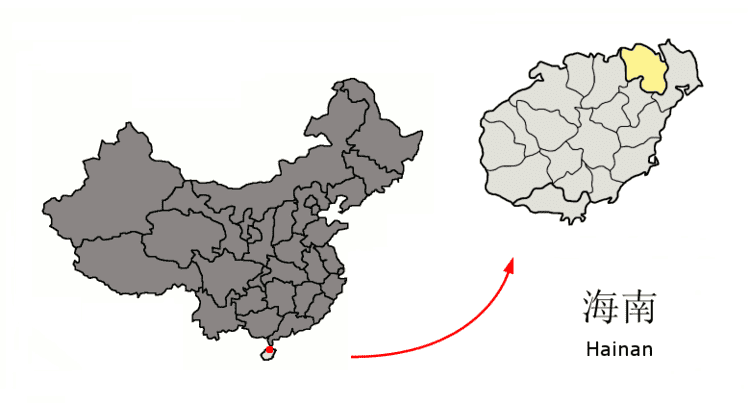 | ||
Colleges and Universities Hainan University, Hainan Normal University, Hainan Medical University | ||
Country Peoples Republic of China | ||
Map of Haikou
Hǎikǒu (Chinese: 海口), is the capital and most populous city of Hainan province, China. It is situated on the northern coast of Hainan, by the mouth of the Nandu River. The northern part of the city is the district of Haidian Island, which is separated from the main part of Haikou by the Haidian River, a branch of the Nandu.
Contents
- Map of Haikou
- Alex pastor wins in haikou gisela pulidos 9th world title pkra 2013 china double elimination
- History
- Geography
- Climate
- Environment
- Comprehensive city improvement campaign
- Water and sewage treatment
- Demographics
- Districts
- Neighbourhoods
- Guomao
- Boai Road
- Hainan University area
- Haikou West Coast
- Parks and recreational areas
- Other notable locations
- Economy
- Education
- Urban
- Shared bicycles
- Air
- Intercity highways
- Rail
- Seaports
- Arts and culture
- Nightlife
- Tourism
- References

Administratively, Haikou is a prefecture-level city, comprising four districts, and covering 2,280 square kilometres (880 sq mi). There are 2,046,189 inhabitants in the built up area all living within the 4 urban districts of the city.
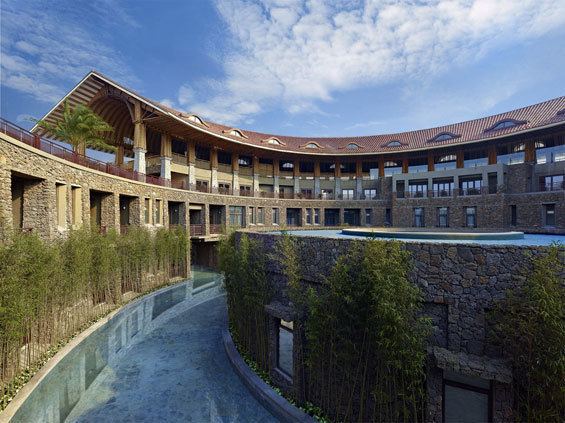
Haikou was originally a port city. Today, more than half of the island's total trade still goes through its ports. The city is home to Hainan University, which has its main campus on Haidian Island.
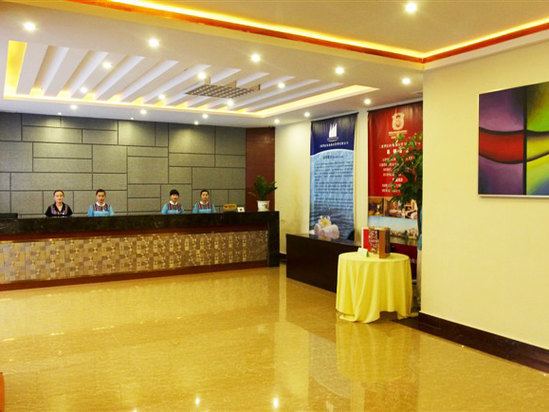
Alex pastor wins in haikou gisela pulidos 9th world title pkra 2013 china double elimination
History
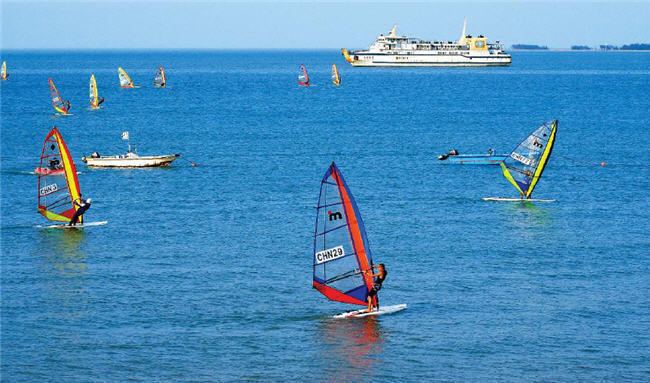
The hanzi characters comprising the city's name, 海口, mean ocean/sea and mouth/port, respectively. Thus, the name "Haikou" is also a word for "seaport" - similar to Portsmouth in England. Haikou originally served as the port for Qiongshan, the ancient administrative capital of Hainan island, located some 5 km (3.1 mi) inland to the south east. During its early history Haikou was a part of Guangdong province. In the 13th century it was fortified and became a military post under the Ming dynasty (1368–1644). The port is located west of the mouth of the Nandu River, Hainan's principal river. When Qiongshan was opened to foreign trade under the Treaty of Tianjin in 1858, Haikou started to rival the old administrative city. It was known internationally as 'Hoihow', based on the local dialect. In 1926, Haikou overtook Qiongshan in population and it was declared a separate administrative city. Haikou was developed as a port during the Sino-Japanese War (1937–45) when the Japanese invaded and occupied Hainan Island from early 1939 to 1945.

Since 1949, Haikou has maintained its position as Hainan's main port, handling more than half of the island's total trade. It has replaced Qiongshan as the island's administrative capital. In 1988, Haikou was made a prefecture-level city as well as the capital of the newly created Hainan Province.
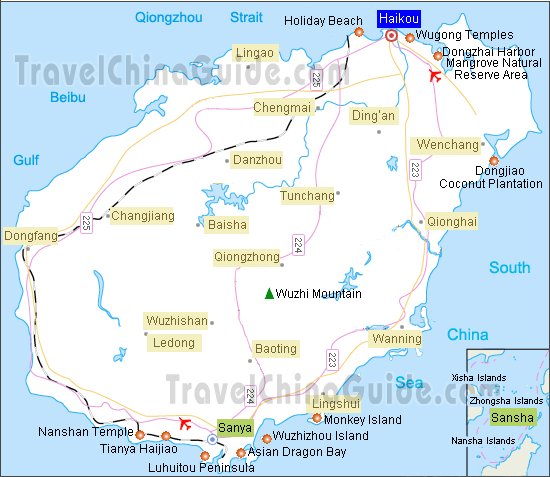
Haikou old town contains the oldest buildings in the city and was largely built by wealthy Chinese from the mainland and some "overseas Chinese" who had returned to their homeland. The houses are a mixture of styles including Portuguese, French, and Southeast Asian. The streets used to be divided into different areas selling Chinese and western medicine, for silk and bespoke clothes, one for fresh fish and meat, and others for the sale of incense, candles, paper, ink, and other goods.
Various projects are currently under discussion to decide the best way to restore and preserve these historical buildings.
Geography
Haikou is situated on the north coast of Hainan Island, by Haikou Bay, facing the Leizhou Peninsula across the Qiongzhou Strait that stretches west from Beibu Bay near Vietnam to the James Shoal bordering the South China Sea to the west. Most of the city is almost completely flat and only a few metres above sea level. It has an area of 2,304.84 km2 (889.90 sq mi).
The northern part of Haikou City, the district of Haidian Island, is separated from the main part of Haikou by the Haidian River, a tributary of the Nandu River. The district is accessed by one of four bridges, the largest being Haikou Century Bridge, which connects the Guomao district with Haidian Island at the estuary of the Haidian River. From east to west the remaining three road connections are provided by the Renmin, Heping and Xinbu Bridges.
Directly to the northeast of Haikou and to the east of Haidian Island is Xinbu Island.
Climate
Further information: Hainan#Annual fogHaikou is on the northern edge of the torrid zone, and is part of the Intertropical Convergence Zone. April to October is the active period for tropical storms and typhoons, most of which occur between August and September. May to October is the rainy season with the heaviest rainfall occurring in September. Despite its location 378 km (235 miles) south of the Tropic of Cancer, the city has a humid subtropical climate (Köppen Cwa), falling just short of a tropical climate, with strong monsoonal influences. Nevertheless, the area has hot summers and warm winters, usually with high humidity. Extremes temperatures have ranged from 2.8 to 39.6 °C (37 to 103 °F) From June to October torrential rains may occur, with 7.0 days annually receiving at least 50 mm (1.97 in) of rain; this period accounts for nearly 70 percent of the annual rainfall of 1,650 mm (65 in). With monthly percentage of possible sunshine ranging from 31% in February to 61% in July, the city receives 2,070 hours of bright sunshine annually.
Environment
As of 2012, Haikou has the second best air quality among major cities nationally, preceded only by Lhasa, Tibet. However, since approximately 2009, due to an increase in the number of automobiles, there has been worsening air pollution.
According to the 2005 statistical book issued by the National Bureau of Statistics, Haikou scored the highest among China's main cities in air quality, with 366 days (2004) of ambient air quality equal to or above grade II, with only 0.033 milligrams/m2 of particulate matter (the least of all main cities), 0.003 milligrams/m2 of sulphur dioxide (only Lhasa had less), and 0.013 milligrams/m2 of nitrogen dioxide (the least of all main cities).
In 1995, the Haikou city government began an initiative to improve the quality of life for its residents. With the approval of the World Health Organization, and Ministry of Health, a ten-point plan was undertaken to address such issues as:
The groundwater is of international standard, and is classified as mineral water.
By 2004, the city had established 43 new community health service centers reaching 85 percent of the population. The initiative has increased the size of Haikou's green spaces to 2,000 hectares, with trees lining 40 percent of its roads. Noise pollution has dropped from 61.1db to 58.2db. 300 public toilets have been built. All industrial effluents, industrial waste water and solid waste, and all live sewage, is now processed through centralized treatment centers, and is disposed of without environmental impact. These improvements and others have increased life expectancy in Haikou to 78.26 years.
Haikou city has also built 163 model ecological villages. Now, over 200,000 villagers in 933 villages have tap water in their homes.
Comprehensive city-improvement campaign
During 2015 and 2016, large-scale city improvements have taken place as part of a province-wide initiative called 双创 ("double create"). It is described by government sources as a campaign to create a cleaner city and create a more civilized city. It is focused on traffic and commerce, but has also improved the overall appearance of the city, tackling air pollution from industry emissions, aiming to ensure the safety of drinking water sources, improving public security in such places as hospitals, schools, malls, and visitor attractions. Details of these improvements include:
Water and sewage treatment
The treatment of Haikou's wastewater, and the supply of tap water is operated by the French company Veolia Water. The partial privatization agreement gives 49 percent ownership to Veolia Water in a 30-year joint venture with Haikou Water Group.
Demographics
According to the 2010 Census, the prefecture-level city of Haikou has a registered population of 2,046,189 inhabitants, 537,848 more than the population declared on the past census in 2000. The average annual population growth during the period 2000–2010 was of 3.1 percent. Most of the population of Haikou are Han Chinese (around 97.75 percent, according to the 2010 Census).
Districts
Haikou is divided in four districts. The information here presented uses 2010 Census data.
Neighbourhoods
There are several distinct neighborhoods within the city, including:
Guomao
Guomao is a relatively affluent area located on the coast between Longquan Road to the east running west for more than one kilometre. The west part of this area has experienced substantial development since about 2007, and now contains dozens of newly built high-rise residential apartment buildings.
Bo'ai Road
This historical area is located on the south side of the Haidian River, at the northern part of mainland Haikou. Much of the area comprises arcade style, dilapidated buildings with European fusion-type architectural facades with Indian and Arabic influences. The buildings are almost all painted white, and are usually no more than a few storeys tall. The eastern part of the area is mainly residential. The western part contains hubs for such items as exotic foods, pets, and fabrics. The building facades and roads have been restored in most of the area, Zhongshan Road being the most notable.
Hainan University area
Located on Haidian Island, this area comprises the entire portion of the island west of its main north/south road, Renmin Dadao. It appears similar to a typical student ghetto, containing many small, inexpensive food stands and restaurants.
Haikou West Coast
A new neighbourhood is under development in Xiuying District south of Hainan International Convention And Exhibition Center and around seven km west of Haikou downtown. A number of government offices have moved there and numerous residential apartment complexes are being built.
Parks and recreational areas
Other notable locations
Economy
The GDP per capita was $3,573 USD in 2008, ranked number 43 among 659 Chinese cities. In 2011, the city's GDP reached 71.3 billion yuan, amounting to about 30 percent of the province's total.
Haikou exports substantial quantities of agricultural produce and livestock. There is a small amount of industry, including canning, textiles, rice hulling, and light engineering.
The "International Tourism and Central Business District" is under construction on the west part of Guoxing Road. The road was once only home to government buildings. Starting around 2011, HNA and other groups began erecting office buildings. Also located at the western end of Guoxing is the HNA Building, the headquarters of Hainan Airlines.
Near the southern end of Haikou, automotive manufacturer, Haima Automobile has its global headquarters.
The Haikou Free Trade Zone (Haikou FTZ) (海口保税区) is a state-level, 1.93 square kilometer area located between Nanhai Road and Yehai Road. It was approved on October 21, 1992 by the State Council.
Education
Several major educational institutions are located in Haikou:
Urban
Haikou has an extensive urban bus service. Standard fare is 1 yuan, with no bus pass, ticket, or transfer system in place. Urban minibuses operated prior to 2009, but have since been phased-out. Taxi automobiles and electric motorbikes operate throughout the city. During 2009–2010, petrol-fueled motorbike taxis were banned and seized by police at numerous checkpoints within the city.
Haikou has experienced a substantial increase in cars since the early 2000s. Traffic on main streets, once light, is now similar to other major cities, with rush hour problems that have prompted the city to expand several main roads and build a new elevated road from the west end of Guoxing Road to new developments west of Holiday Beach.
Many main roads in the city have a side lane, separated by a median, for two-wheeled vehicles.
Physical barriers were installed on many of the main two-way streets throughout the city in order to separate opposing lanes. These were installed for safety reasons to prevent pedestrians from crossing the streets at locations other than intersections.
Roundabouts are not prevalent in Haikou, being used mainly on Hai Xiu road, and a few other locations.
Traffic cameras are used at many main intersections in the city, with tickets being issued by post for traffic light infractions.
There is one tunnel in the city, the Qiaozhong Road Tunnel.
Shared bicycles
The Haikou Public Bicycle System has about 20,000 bicycles. A pre-paid swipe card system is used to gain access to them. Starting on January 24, 2017 privately run app-based "dockless" shared bikes came into service. By April, there were about 40,000 of these types of bikes available. Ofo, Mobike, and "Quick to" all cost 2 RMB per hour. Ofo and "Quick to" bikes have tires with tubes, meaning many are left around the city with flat tires. The Haikou Public Bicycle System has installed a number of new, more modern bikes with tires that cannot be punctured. Part of Mobike's fleet also uses these types of tires.
Air
Haikou is served by Haikou Meilan International Airport (IATA: HAK, ICAO: ZJHK[1]), which is located 25 km (16 mi) from the city.
In January 2011, Haikou was selected to be the first test site for an experiment allowing private helicopter flight in China.
Intercity highways
Three main highways connect Haikou to other parts of Hainan, running east, west, and south through the middle of the province. The Haiwen expressway connects the city with Wenchang to the southeast.
Rail
A railway links Haikou to the mainland. A ferry service transports the railway cars, along with other motor vehicles across the strait.
The Hainan East Ring Railway links Haikou and Sanya. There are 15 stations in between, either in operation or still under construction. Trains are designed to travel at 250 km/h (155 mph). Travel time from Haikou to Sanya is approximately 1 hour and 22 minutes. The main station in Haikou is Haikou East Railway Station (东环铁路海口东站) located near the southern end of Long Quan Road.
An announcement was made in December 2010, that another high-speed railway will be built along the west coast of Hainan connecting with the Hainan Eastern Ring Railway.
Seaports
Haikou has four seaports for passenger and cargo service. Haikou New Port, formerly known as the Inner Harbour, is located on the southern side of the mouth of the Haidian River. Approximately 7 km (4 mi) west of Haikou New Port is Haikou Xiuying Port. This port is considerably larger, and is the main distribution centre for cargo entering Hainan. It is also a major port for immigration onto Hainan Island. Around 20 km (12 mi) west of downtown Haikou are South Port and Haikou Port New Seaport.
Arts and culture
Several large public buildings now occupy Guoxing Road, the new area for arts and culture. These include the Hainan Provincial Museum, the Hainan Provincial Library, and the Hainan Centre for the Performing Arts. These are all located near to one another on the south side of the road, west of Haikou College of Economics, Haikou campus.
At the west side of Evergreen Park is the Haikou Great Hall of the People, a concert hall, and Hainan Exhibition & Convention Center, a large centre for trade shows and other commercial events. Haikou City Stadium, is the main venue for sports events, and is located at the southeast corner of Evergreen Park.
Older cultural sites include the now-restored buildings of the Bo'ai Road area, the tomb of Hai Rui, Xiuying Fort in the Guomao area, the Temple of the Five Lords, the cemetery for the martyrs of Hainan's Battle of the Liberation, and the former temple Haikou Yazhou Gu Cheng.
Nightlife
Bars and KTV are patronized until after midnight. There are several popular bar streets within the city. Up until 2015, roadside BBQ sites were common throughout the city. A large-scale campaign to clean up the city has since prohibited them.
Tourism
Also known as the "Coconut city", Haikou is an important tourist destination for China. The city received 4.11 million tourists in 2002, up 7.99 percent from 2001. The city earned approximately three billion yuan (361 million US dollars) from the tourism industry during that period, up 11 percent from the previous year.
Haikou is also developing its Meetings, Incentives, Conferencing, Exhibitions industry. The local government set up the Haikou Convention and Exhibition Bureau in June 2012 and pledged RMB35 million (US$5.6 million) to support the development of the MICE industry. More international hotel chains are also arriving. By 2013, international brands included Shangri-La, Westin (opening September 2013), and Sheraton.
In 2016, the China Merchants holdings group unveiled its plans to develop Shenzhen, Haikou and Sanya as the three destination ports that its South China Sea passenger cruises would serve. Subsequently, a large passenger cruise terminal was inaugurated in Shenzhen in October 2016.
